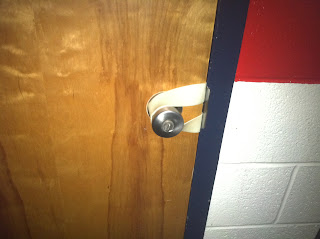We are fortunate that the
"information age" provides us with knowledge, facts, and opinions of
folks from all over the fire service. While we may not always agree with
the information disseminated, it is beneficial to hear what other folks are
thinking and see how they're doing business. I recently read an editorial
stating: "because of the fires we are fighting today, Trucks and Rescues
will no longer be able to operate independent of a hoseline." I, very
respectfully, disagree with this mindset and feel it's indicative of another widespread
epidemic within our fire service, but I will talk about that some other time. While contrary to the way I think, it
seems more folks are subscribing to the idea that Trucks and Rescues cannot
operate independent of a hoseline in the 21st century. In my opinion, this mindset will lead
to Trucks and Rescues becoming less effective. Trucks and Rescues can still operate without a hoseline,
however this operation must occur in a precise, and mindful, manner.
Studies have shown us that
fire loading and building construction are different than those that
generations before us faced and, in turn, we need to acknowledge this to remain
effective on the fire ground. With that said, it doesn't mean we stop
going in to fires or we change the incident objectives of the fireground. It
means that we should use this information to influence our decision making on
the fireground. The 2010 UL study,
Impact of Ventilation on Fire Behavior in Legacy and
Contemporary Residential Construction,
provided the fire service with a lot of great information that we must
acknowledge. Unfortunately, some folks are failing to acknowledge key
components of the study. One of these key components is the effect of
"well ventilated, compartment fires" on interior doors. Three
doors were studied and all three doors took at least five minutes to fail while
being exposed to a "well ventilated, compartment fire".
So what does this mean to
us? In my world, five minutes is a pretty significant amount of time on
the fireground. The simple act of closing a door can buy us a lot of time
to do a lot of important work. If
a Truck or Rescue Company arrives before the Engine Company, immediate efforts
need to be made to locate and confine the fire. This is nothing new, or
it shouldn't be anyways, however the UL study truly demonstrates the time we
gain by confining the fire with a door.
If the fire is confined, our searches can be carried out in a safer
manner and we have reduced the potential of ventilation flow paths being created.
Next we need to get our
search done. A lot of folks have been taught to chock doors as they go
through them and this is great, if you're operating as part of an Engine
Company with a charged hoseline. However, if you are part of a Truck or
Rescue Company, chocking the door provides a ventilation flow path for the fire
to cut you off or overtake you. Instead, close the door behind you when
you enter a room to search. Closing the door will isolate you from the
fire and allow you to search a room with confidence that fire will not enter
the remote compartment you have created. Should fire take possession of
the corridor you entered from, the door should provide you with approximately
five minutes of refuge. Five
minutes may allow you to exit safely from a window, breach a wall to an area of
safety, or allow the Engine Company to move in and extinguish the fire.
Either way, it's five minutes you didn't have before.
One concern that folks have
with closing doors behind them is that it will lead to disorientation and difficulty
in locating the door. I feel this
is a legitimate concern as I too have been temporarily disoriented while
searching large, or cluttered, rooms.
A method I have developed to combat this concern involves using a MN8 Fox
Fire illuminating helmet band.
When entering a room to search, I place the helmet band over the door
knobs. This accomplishes two
things: it serves as a point of reference for the member searching the room in
limited visibility conditions and it also lets folks, on the other side of the
door, know a member is in the room.
A picture of this method can be seen below and I am working with the
good folks at MN8 to determine if a better product, similar to the black door
straps also seen below, can be developed and if it would be a marketable
product.
Using our brains, coupled
with using doors, will allow Truck and Rescue companies to operate independent
of hoselines in 21st century fire buildings. Proper actions taken by Truck or Rescue
companies operating independent of a hoseline may limit fire progression and
save lives. Blanket statements, or
creating policies, that prevent Truck or Rescue companies from performing important
fireground tasks will compromise the effectiveness of these companies. Instead, effectiveness can be
maintained by performing these tasks in a precise, and mindful, manner.



No comments:
Post a Comment